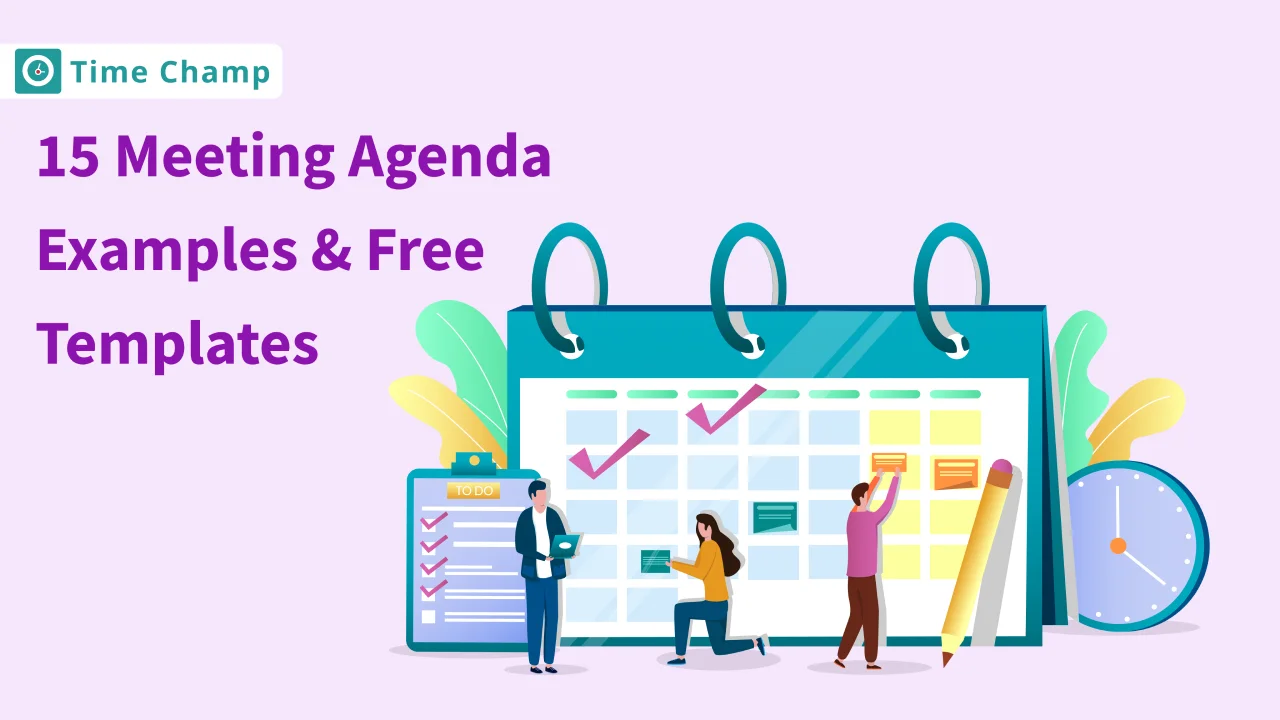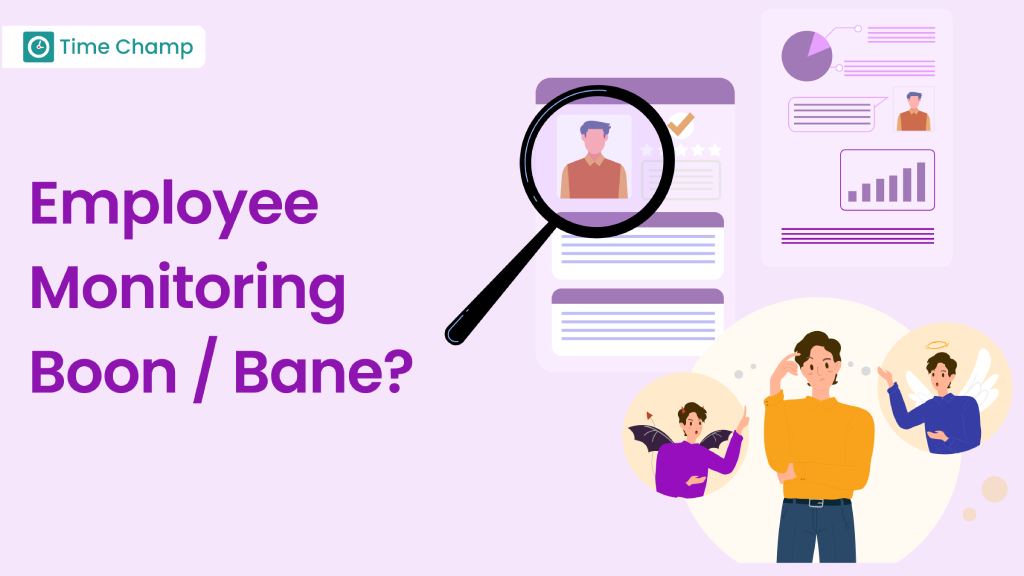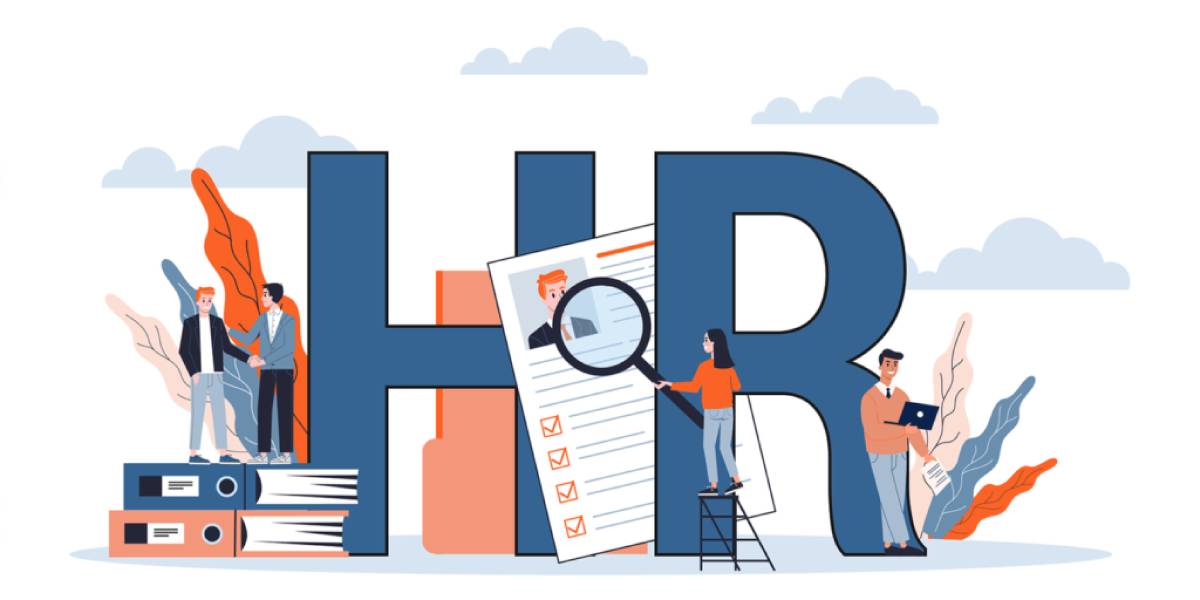Meetings play an integral role in the business communications path serving as a point of collaboration, decision-making, and strategizing. While such meetings are often intended to make processes simpler and productivity easier, they sometimes develop a negative reputation as taking up time without yielding results. The secret to productive and meaningful gatherings, whether strict business meetings or informal employee conferences, is in the impact of a quality meeting agenda.
What is a Meeting Agenda?
A meeting agenda is a piece of paper that lists topics for discussion, decisions to be made, and action points during a meeting. It acts as a roadmap for the meeting, providing participants with an understanding of what is to be achieved during the course of the meeting, and ensuring that these goals are effectively addressed. An agenda assists in achieving the goals of a meeting efficiently because it sets out specific expectations as to what needs to be discussed.
Benefits of an Effective Meeting Agenda
A. Meeting Agenda: More than Just a List
The typical brief meeting agenda focuses on the immediate issues at hand. It’s frequently used for quick, informal meetings where the main purpose is to update the team on what has been done or address urgent issues. Such a simple agenda is easy to make and stick to, which makes it convenient for quick and efficient meetings.
1. Simple meeting agenda
A simple meeting agenda is a basic tool that can be used by any team working in a dynamic and fast-paced business landscape.
- Facilitates Quick Sync Ups: They make quick decisions as the agenda keeps meetings direct.
- Promotes Flexibility: The adaptable nature allows for an agile response to sudden shifts and emergent issues that need addressing.
- Ease of Preparation: Requiring less detail, attendees can prepare promptly and concentrate on the main idea of the meeting.
- Encourages Open Dialogue: Simple structure may result in an open atmosphere, where sudden thoughts and ideas can be taken to the floor.
2. Formal Meeting Agenda
On the other hand, a formal meeting agenda is more descriptive, and it has been used for any type of structured business meeting. It consists of subjects, elaborative headings of those issues which are to be discussed in detail, the time allotted for every item, and the names of the individuals who will present each topic. A formal agenda is very important in ensuring the professionalism and productivity of business meetings.
On the other hand, formal meeting agendas are the basis for highly organized and carefully planned sessions.
- Enhances Documentation: Every point in the agenda has a documented procedure that is responsible and traceable.
- Improves Structural Rigor: Detailed agendas guarantee that all key issues are subject to methodical discussion and overlook no point.
- Outlines Specificity of Roles: Participant responsibility becomes clearer, leading to specialized preparation and contribution.
- Maintains Protocol: To preserve the image of order and seriousness in accordance with the company’s values, strict adherence to formalities is maintained.
Shared Benefits of Simple and Formal Meeting Agendas
Both styles of meeting agendas, simple and formal, share some common beneficial outcomes:
- Time Efficiency: Every second counts in business. Agendas save time by allocating slots to presentations and discussions in advance, thus avoiding an extended meeting.
- Direction and Purpose: A purpose-less meeting is like a ship without a rudder. Agendas guarantee that a certain aim is set, and all participants are directed to the main ideas for the meeting.
- Follow-Up Actions: What happens after the meeting is as critical as the discussion itself. Agendas help outline specific action items and follow-up tasks and inspire to continue productivity.
- Inclusivity: Agendas make participation equal since various aspects of a team are given a room on the table, thereby ensuring that there is an adequate representation of different perspectives.
- Conflict Resolution: Agendas can address potential conflicts indirectly by listing out topics that should be on the agenda. Where conflicts may arise, they will provide an opportunity to discuss and resolve differences before matters get worse.
3. Features of a Well-Structured Meeting Agenda
- Clear Purpose: Every agenda should start with a clear statement of the meeting’s objective. This helps participants understand the importance of the meeting and aligns their thoughts toward achieving the goals set.
- Stay on Track: With specific time slots and topics, an agenda keeps the meeting focused and on track. This is particularly important in discussions that have the potential to veer off-topic.
- Define Responsibilities: Assigning topics to specific individuals or teams clarifies responsibilities. This encourages preparation and engagement, leading to more fruitful discussions.
B. Enhancing Collaboration and Efficiency
- Clear Purpose: There should be a clear statement of the purpose for every agenda This makes participants realize the significance of the meeting and prepare their minds to attain set goals.
- Stay on Track: An agenda ensures that the meeting is focused and on track with specific time slots and topics. This becomes of particular importance when conversations can very easily go off-track.
- Define Responsibilities: The assignment of specific topics to individuals or teams determines responsibilities more clearly. This promotes preparation and interaction, resulting in more productive discussions.
Benefits of Utilizing a Meeting Agenda:
- Clarity and Focus: A meeting agenda serves a definite purpose, so that each focus remains relevant, and every item discussed gets the thoroughness required.
- Time Management: By planning out topics in terms of time limits, agendas can avoid lengthy meetings and express respect for the participants’ time while keeping things brief.
- Responsibility Assignment: Agendas clearly outline what is expected of every attendee, whether it is providing ideas, making presentations, or chairing a discussion.
Components of a Meeting Agenda:
Designing an efficient agenda for a meeting requires certain crucial elements that ensure the success of the meeting. These elements help in establishing clear expectations which guide discussions and ensure that the meeting attains the desired outcomes.
- Objective: This is the compass of the meeting –the central reference point by which every agenda item should contribute. It provides the answer to the basic question, “What do we want to accomplish by the end of this meeting?” The goal should be precise, measurable, and reachable as a distinct path for all participants.
- Topics: The agenda should contain all the major points and topics to be discussed. This is the roadmap for dialogue, determining what this encounter will be like. This ensures smooth transitions from one item to the next as topics should be related to the purpose of a meeting and should appear in a logical order.
- Time Allocations: The estimated time of each topic on the agenda should be noted. This helps in controlling the duration of meeting and each discussion point has taken proper time. By doing so, the participants will remain on task and there is little chance that they would go off in some long-winded tangent.
- Participants: An agenda needs to specify all people who will show up at the meeting and what their role is – whether that should be as a speaker, moderator, recorder or simply attendant. This clarifies expectations and enables participants to prepare for their roles, thus fostering a collaborative atmosphere.
- Preparation: This may be in the form of background readings, data analyses, or reviewing documents. ̵
- Follow-Up: Seen as a critical but often overlooked component, the follow-up section details what was agreed on during the meeting in terms of action items, who will be responsible for these tasks and by when they should complete them. This also makes individuals responsible for carrying out tasks and making sure that the progress achieved during the meeting becomes manifested as real outcomes.
How to Write Meeting Agendas with Key Steps
Creating an engaging and productive meeting agenda involves steps designed to stimulate interaction and productivity.
Key Steps for Writing an Effective Meeting Agenda:
- Identify the Meeting’s Purpose: Before starting to write the first word of your plan, pause for a second and recall what the purpose of this meeting is. This step is most important because it establishes the tone and direction. Do you have a particular problem to solve, do you want to brainstorm ideas or perhaps make decisions collectively? Concisely outline the main goal. Therefore, everyone knows ‘why’ people are coming together from the very beginning.
- Select Key Topics: Curate a list of pertinent and orderly topics with the purpose in mind. Each issue should be a platform to reach the identified goals of meetings. Tangential subjects should be filtered out to keep the discussions focused on their end goal and allow for productivity in time.
- Assign Time Blocks: Similarly, allocate the scarce time of the meeting among selected topics. The assignment of time blocks acts as a checkpoint to keep the discussion succinct and advancing. Tight schedules facilitate the participants to get straight and effective with their inputs, creating a more active and thoughtful exchange.
- Outline Participant Roles: participant roles are indicated in a balanced meeting agenda design. Leading the discussion of each topic? Who is responsible for taking notes or leading a specific section? These roles should be clearly defined so that it reduce confusion when the meeting is in progress, allowing for a steady flow of discussion points as they arise.
- Distribute the Agenda in Advance: Once your format is spelt out and ordered, send it to the attendees beforehand. This allows participants sufficient time to review the topics, do any required research for productivity and arrive armed with insights or questions. Early distribution is also a respectful gesture to everyone’s time, which will ensure that people prepare well in advance when attending the meeting–setting them up for its success.
- Ensure Effective Communication: To boost the effectiveness of your meeting agenda, use an AI paraphrasing tool to clarify the key points. This ensures that your agenda is communicated without any misunderstandings among attendees.
Examples and 15 Meeting Agenda Templates
To illustrate, here are brief examples of various meeting agenda formats:
1. Weekly Team Meeting Agenda
Meeting Date & Time: June 3rd, 2023, 2:00 pm
Meeting Purpose: – Sync on the progress of current projects and tasks for the upcoming week.
Attendees: All team members.
Topics & Timeline:
- Project Progress Review: 15 minutes.
- Outlining Next Week’s Tasks: 10 minutes.
- Team Feedback and Concerns: 10 minutes.
Action Items:
Delegation of new tasks.
Identification of project hurdles.
Follow-up Tasks:
Personal tracking of task progress.
2. Streamlined Startup Meeting Agenda
Meeting Date & Time: June 5th, 2023, 9:00 am
Meeting Purpose: Assess the completeness of tasks and immediate actions.
Attendees: Startup core team.
Topics & Timeline:
- Recap of Fast-Track Projects: 20 minutes.
- Immediate Action Steps: 15 minutes.
- Rapid-fire Team Inputs: 10 minutes.
Action Items:
Set responsibilities for urgent tasks.
Align resources for priority actions.
3. Strategic Board Meeting Agenda
Meeting Date & Time: June 10th, 2023, 3:00 pm
Meeting Purpose: Carry out strategic performance reviews and plan future growth.
Attendees: Board members, CEO, CFO, CTO.
Topics & Timeline:
- Annual Financial Review: 30 minutes.
- Market Trends and Opportunities: 20 minutes.
- Long-term Strategic Initiatives: 40 minutes.
Action Items:
Approve investments in new ventures.
Set objectives for upcoming quarters.
Follow-up Tasks:
This is to be done in detailed planning meetings for each strategic initiative.
4. Creative Brainstorming Session Agenda
Meeting Date & Time: June 8th, 2023, 1:00 pm
Meeting Purpose:
Attendees: Product team, Creative Directors.
Topics & Timeline:
- Ideation Warm-up Exercises: 15 minutes.
- Open Brainstorming Session: 30 minutes.
- Idea Categorization: 15 minutes.
Action Items:
Choose the top ideas for feasibility analysis.
Follow-up Tasks:
assign research assignments for chosen ideas.
5. Monthly Departmental Review Agenda
Meeting Date & Time: June 15th, 2023, 11:00 am
Meeting Purpose: Review departmental performance and identify performance issues.
Attendees: Department heads and managers.
Topics & Timeline:
- KPI Analysis: 30 minutes.
- Discussion on Performance Gaps: 20 minutes.
- Brainstorm Improvement Strategies: 25 minutes.
Action Items:
Create performance and enhancement plans.
Follow-up Tasks:
Departmental managers to submit improvement plans.
Post improvement plans to departmental managers.
6. Project Kick-off Meeting Agenda
Meeting Date & Time: June 7th, 2023, 10:00 am
Meeting Purpose:
Attendees: Project team, stakeholders, project manager.
Topics & Timeline:
- Project Overview: 20 minutes.
- Role Assignments: 15 minutes.
- Milestone Planning: 25 minutes.
Action Items:
Specify the timeline of projects and individual roles.
Follow-up Tasks:
Hold regular project team meetings.
7. Health and Safety Briefing Agenda
Meeting Date & Time: June 14th, 2023, 8:00 am
Meeting Purpose: Notify the team about new safety protocols.
Attendees: All employees and safety officers.
Topics & Timeline:
- Review of Safety Incidents: 15 minutes.
- New Safety Protocols Briefing: 30 minutes.
- Q&A and Clarifications: 15 minutes.
Action Items:
Acknowledgment of understanding new protocols.
Follow-up Tasks:
Carry out safety drills following the revised guidelines.
8. End Of Year Celebration Planning Agenda
Meeting Date & Time: June 21st, 2023, 4:00 pm
Meeting Purpose: Plan the end-year event.
Attendees: Events committee, HR representative.
Topics & Timeline:
- Event Theme Selection: 10 minutes.
- Venue and Catering Options: 20 minutes.
- Entertainment and Activities: 20 minutes.
Action Items: Detail the event and assign tasks.
Follow-up Tasks: Secure bookings and send out invitations.
9. Quarterly Sales Review Meeting Agenda
Meeting Date & Time: June 18th, 2023, 2:00 pm
Meeting Purpose: Evaluate sales performance and plan for the next quarter.
Attendees: Sales team, marketing, product leads.
Topics & Timeline:
- Sales Performance Analysis: 25 minutes.
- Discussion on Sales Targets: 20 minutes.
- Strategy Workshop: 30 minutes.
Follow-up Tasks: Meeting with sales team members individually.
10. Tech Team Sprint Retrospective Agenda
Meeting Date & Time: June 16th, 2023, 3:00 pm
Meeting Purpose: Reflect on the previous sprint and identify areas for improvement.
Attendees: Tech team, scrum master and product owner.
Topics & Timeline:
- Review Completed Work: 15 minutes.
- Discuss Challenges and Successes: 25 minutes.
- Action Points for Next Sprint: 20 minutes.
Action Items: Make commitments to changes and delegate.
Follow-up Tasks: Adopt process changes agreed upon in the previous sprint.
11. New Product Development Discussion Agenda
Meeting Date & Time: June 22nd, 2023, 1:00 pm
Meeting Purpose: Invent new product development ideas.
Attendees: R&D team, marketing, sales.
Topics & Timeline:
- Market Gap Analysis: 25 minutes.
- Concept Brainstorming: 35 minutes.
- Feasibility Discussion: 20 minutes.
Action Items:
Identify concepts to further research and development.
Follow-up Tasks:
Schedule detailed Product concept meetings.
12. Customer Service Improvement Workshop Agenda
Meeting Date & Time: June 24th, 2023, 9:00 am
Meeting Purpose: Enhance customer service practices.
Attendees: Customer service representatives and managers.
Topics & Timeline:
- Review of Customer Feedback: 20 minutes.
- Interactive Customer Service Training: 40 minutes.
- Implementation Planning: 30 minutes.
Action Items: Routinize new service routines.
Follow-up Tasks: Monitor customer feedback for improvements.
13. Annual Compliance Training Agenda
Meeting Date & Time: June 27th, 2023, 2:00 pm
Meeting Purpose: Complete mandatory compliance training.
Attendees: All departmental staff.
Topics & Timeline:
- Compliance Policy Overview: 20 minutes.
- Training Module Completion: 40 minutes.
- Q&A on Compliance Issues: 20 minutes.
Action Items: Verify completion of training modules.
Follow-up Tasks: Update records to indicate training compliance.
14. Executive Leadership Retreat Agenda
Meeting Date & Time: June 30th, 2023, all-day
Meeting Purpose: 2 Strategic visioning and building bonds among the leadership team.
Attendees: C-suite executives invited speakers.
Topics & Timeline:
- Company Vision Presentation: 2 hours.
- Leadership Workshops: 3 hours.
- Open Discussion and Networking: 2 hours.
Action Items: Strategize based on discussions.
Follow-up Tasks: Leadership to form implementation plans for their units.
15. School Board Community Forum Agenda
Meeting Date & Time: July 1st, 2023, 6:00 pm
Meeting Purpose: Interact with the community about school policies and updates.
Attendees: School board members, parents, teachers, and students.
Topics & Timeline:
- Updates on School Progress: 30 minutes.
- Community Open Forum: 1 hour.
- Summary and Closing Remarks: 30 minutes.
Action Items: Finalize community feedback for board review.
Follow-up Tasks: Focus on addressing raised points during the next board meeting for schools.
Planning a properly structured meeting agenda is necessary for the successful conduct of virtually any meeting. An efficient agenda makes it easy to hold a narrow discussion, does not leave out crucial subjects, and assists with time management.
Meeting Agenda Layout:
- Meeting Agenda Layout: Finally, a meeting agenda is usually structured as follows title of the conference date and hour; location or video conferencing link the purpose objectives list of topics to be covered with scheduled time allocation names of presenters or speakers next steps or action items.
- Meeting Agenda Outline: An outline is a naked framework of the meeting, which includes the main points in sequence as they will be discussed. It makes the detailed agenda possible.
- Business Meeting Agenda: Business trajectory issues addressed here include business metrics review, and goal setting or evaluation, as well as decisions on key initiatives.
- Creating a Meeting Agenda: Formulating an agenda means defining the objectives of the meeting, specifying key topics that will be discussed during the meeting, setting up a sequence of items on it, designating certain roles and time intervals for them, and sending out the agenda beforehand.
- Meeting Agendas: This term means the plural meetings involving varied types of agendas, taking note that each type of meeting – daily stand-ups to annual general meetings, calls for unique planning approaches.
- Simple Meeting Agenda: A simple agenda outlines the basics of what needs to be done during a meeting without going into too much detail. It is frequently used during less formal gatherings or short, routine meetings.
- A Meeting Agenda: This refers to the one document that guides one particular meeting, aimed at keeping everyone focused on the goals of each given meeting.
- Business Meeting Agenda Examples: These could range from a very detailed agenda for an executive leadership retreat down to more of a high-level agenda for a monthly cross departmental update meeting.
- Meeting Agendas Examples: These are the templates from which organizers can come up with ideas for their needs – say a team-building workshop or planning session on how to roll out a new product.
- Preparing a Meeting Agenda: This is usually achieved through a collaborative effort with key stakeholders to ensure that all critical issues are addressed, and the session can progress smoothly.
- Staff Meeting Agenda: Usually, concerned with short-term and operational aspects of team management such as workflow discussions, status updates, team-building activities, or addressing problems that the team faces.
Conclusion
Corporate collaboration is mapped out by meeting agendas like navigational charts. They make the optimal use of time and turn the aim of a meeting into concrete actions. 15 meeting agenda examples and templates provided by us a versatile range that includes various meeting scenarios. With these resources, you can hold meetings that enhance communication, improve productivity, and carry your organization towards its goals, the templates provide unprecedented meeting efficiency or create your own based on the pre-designed formats.
FAQs on the Meeting Agenda
Use a template, specify the reason for the meeting, choose appropriate topics, allocate time intervals, describe roles participants and send out an agenda before the event to be prepared.
A simple agenda is short and easy to adapt, and a formal agenda is structured in detail, suitable for official meetings.
Key elements in which considerations will have to be made include the purpose of the meeting, subjects tabled for discussion, time allocations, participant list with roles/responsibilities assigned and preparatory work as well as follow-ups.
The major function of meeting agenda is to outline the topics, purposes and structure that a meeting should take
They are clear, save time, allocate tasks, help in getting ready, and lead to a well-organized follow up which results in productive meetings.
Distribute the meeting agenda several days before the meeting or, at least, 24 hours in advance to allow proper preparation.
Yes, templates are meant to be customized.
There are several online templates, such as in Time Champ, which offers a user-friendly interface and customizable options.
Agendas clarify objectives and simplify discussions, resulting in more efficient meetings with better decision making and action planning.
Yes, an agenda is critical to a successful meeting online for proper organizing and directing the remote meetings that ensure that people from all places are paced together and goals are achieved.





